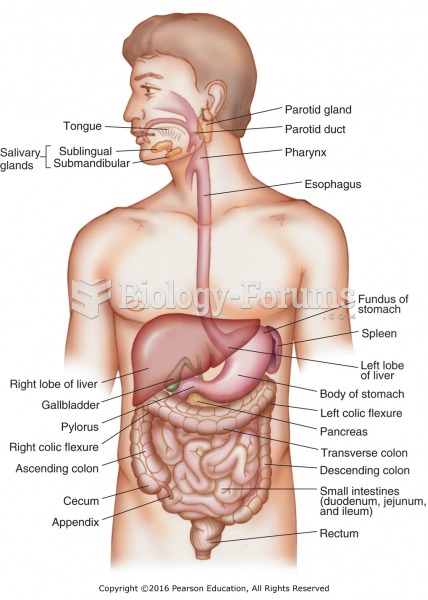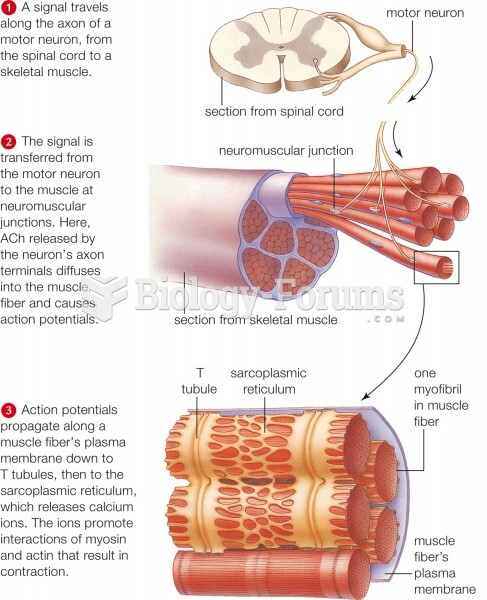|
|
|
There are over 65,000 known species of protozoa. About 10,000 species are parasitic.
The people with the highest levels of LDL are Mexican American males and non-Hispanic black females.
Hippocrates noted that blood separates into four differently colored liquids when removed from the body and examined: a pure red liquid mixed with white liquid material with a yellow-colored froth at the top and a black substance that settles underneath; he named these the four humors (for blood, phlegm, yellow bile, and black bile).
Green tea is able to stop the scent of garlic or onion from causing bad breath.
According to research, pregnant women tend to eat more if carrying a baby boy. Male fetuses may secrete a chemical that stimulates their mothers to step up her energy intake.







